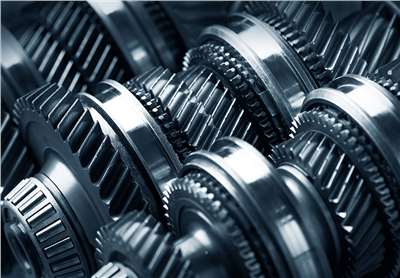
WHY IT’S ESSENTIAL TO KEEP YOUR MACHINERY WELL-BALANCED
Dynamic balancing is a function designed to enable machinery to operate more efficiently and smoothly
What is dynamic balancing?
Dynamic balancing is a function designed to enable machinery to operate more efficiently and smoothly; the action of dynamic balancing evens out the placement and dispersion of all – or any – mass that exists around the centre of a moving rotor.
Enabling dynamic balancing in your machinery is essential for your machinery to work efficiently, and it will help to extend the life of all elements of the machine as well as decrease faults and potential economic loss associated with these issues.
How does it work?
Think back to when you were young, watching cartoons – every now and then a pizza guy would throw a pizza up and rotate it on his fingers. This shows how a rotor’s rotating centreline works, and what can happen without dynamic balancing. As the pizza – or cog – rotates faster and faster, the effect of even a minimal imbalance increases. If the balance is minisculey out, the pizza will start to wobble and ultimately fall.
Other factors that can throw your machine out of whack
There’s quite a lot that may throw balance to the wind when it comes to your machinery and its rotational axis. For example, external stimuli such as excess heat and frigid cold temperatures, environment and terrain, speed, amount of use, general wear and tear, weather, and more can influence the balance and ultimately the efficiency of your machinery.
Why is it important?
If the balance around the rotor is not aligned, it can cause excessive damage to your machinery and, in some severe cases, can even present potential dangers to those individuals involved with or who operate around the machinery in need of balancing. An unbalanced rotor will cause extensive reverberations and vibrations throughout the machine, and this is one of the sure-fire signs that dynamic balancing is necessary for optimal performance.
If an unbalanced rotor is left unattended, it could eventually tear down and completely destroy the rotor, rendering the machine faulty and even dangerous. It is well worth the investment to keep the centrifugal force operating centrally.
How far is too far on the scale?
A perfectly balanced rotor isn’t necessarily the make or break of your machine: there are levels of functional misalignment that won’t do damage or pose danger to your machine or those around you. Balancing units are measured in ‘grades’, and are standardised for safety and efficiency using balancing scales. These grades are then converted to ‘unbalanced’ units in order to assess the level of mass distribution around the rotor centre. When calculating balance, engineers may also use this term interchangeably with ‘tolerance’ units. These terms help to determine calculations for the suitability of the balance of current machinery, and whether it is need of dynamic balancing action.
So is your machine unbalanced?
There are several different types of misalignments commonly associated with machinery:
- Static unbalance is associated with the parallel axis to the shaft being corrected in a single plane.
- Couple unbalance is usually corrected in two planes, and is associated with the mass axis intersecting a running axis.
- Dynamic unbalance is also corrected in two planes, and is most often associated with both static and couple unbalance situations.
Determining what type of unbalance your machine is suffering from and where the fix should be concentrated is an important aspect of the dynamic balancing process – the more you know, the better the fix.
Re-balancing and instating dynamic balance
So it’s time to re-balance – there’s a machine for that! Rotor manufactures are well equipped to identify exactly where the displacement is happening, and are accurate up to 0.001 mm, which means the solution will be concentrated directly on the problem area, without much room for error.
Reasons to action dynamic balancing on your machine today
- Reduce expenditure of all costs associated with your machines by analysing their balance efficiency.
- Increase the safety of the working environment for all employees, or for yourself.
- Keep your machine working for you; keep it pristine, and operating at peak efficiency.
- Ensure that your machine(s) meet all legal standards on safety and don’t pose a threat.
- Labour costs associated with fixing faulty equipment.
- The reputation of your business and thus your machinery should be kept in the best condition.
- Replace parts as necessary to extend the life of your machine and cut up-front costs of purchasing new machines.
These are just a few reasons why it’s worthwhile to keep your machines up to scratch, well-balanced, and working to peak efficiency – It always pays to keep your machinery well balanced.